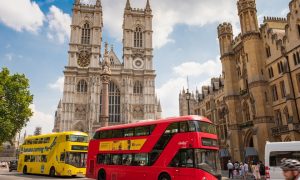UK immigrationIt is not only a process of identity change, but also a journey of integration into a new culture and adaptation to a new life. From educational opportunities to the job market and the choice of living environment, every step is crucial. This guide will provide you with a comprehensive analysis of the UKimmigrantsThe education system, employment opportunities and living environment will help you to quickly adapt to your new life in the UK.
I. The British education system
The UK is known for its world-class education system and is one of the main focuses for immigrant families.
1. Basic education
The UK education system is divided into four regions - England, Wales, Scotland and Northern Ireland - and while the overall framework is similar, there are subtle differences.
- compulsory education: Education in the UK is free and compulsory for children aged 5-16 years, covering elementary school (Primary School) and secondary school (Secondary School).
- Public vs. private schools: Most immigrant families choose public schools because tuition is free; private schools are known for small class sizes and excellent teachers, but tuition is higher.
2. Higher education
- The UK has some of the world's leading universities, such as Oxford, Cambridge and Imperial College London. Children of immigrants have the same opportunities to apply as local students, while international students have to pay higher international tuition fees.
- Immigrant families can apply for student loans to help their children complete their education.
3. Education support services
For immigrant families who have recently arrived in the UK, the Education Department will often provide a language support program (EAL) to help children adapt more quickly to a fully English speaking environment.
II. The job market in the United Kingdom
The UK is an economically advanced country with many opportunities for immigrants to work and start their own businesses. However, successful integration into the job market requires an in-depth understanding of the UK employment environment.
1. High-demand occupations
The UK government regularly publishes a list of shortage occupations covering areas such as healthcare, IT, engineering and education. Migrants with relevant skills canskilled migrantVisas make it easy to find a job.
2. Work culture
- working hours: The average working week is 35-40 hours, with stricter breaks on weekends and holidays.
- Workplace Etiquette: The UK workplace focuses on communication and collaboration, and polite language in meetings and emails is very important.
- pay level: London has a higher average wage, but also a higher cost of living.
3. Entrepreneurial opportunities
The UK supports immigrants to start their own businesses by offering visa types such as the Start-up Visa and Innovator Visa. At the same time, the UK market is highly transparent and the government offers many supportive policies for SMEs.
4. Pathways to employment
- Online recruitment platforms (e.g. Indeed, LinkedIn).
- Professional headhunters.
- Community Recruitment Events.
Immigrants are required to prepare a complete resume and references to showcase their skills and experience when seeking employment.
III. Living environment in the United Kingdom
Choosing the right place to live is an important part of integrating into life in the UK, and the living environment varies greatly from region to region.
1. The urban versus rural option
- large cities: Cities such as London, Manchester and Birmingham offer a wealth of employment and educational opportunities, but rents are high and the pace of life is fast.
- Small towns and villages: such as Bath, York and the Cotswolds, which are beautiful and well policed, but where employment opportunities are relatively limited.
2. Types of housing
- rent an apartment: The UK rental market is well developed, with apartments (apartments) and townhouses (terraced houses) being common choices. The average monthly rent in central London is around £1,500 - £2,500, while other areas such as northern cities can be as low as £700 - £1,000.
- buy a house: Stamp duty is payable on home purchases in the UK, and expats also need to be aware of the impact of lending policies and exchange rate fluctuations.
3. Community facilities and security
When choosing a place to live, it is recommended to pay attention to the surrounding facilities, such as schools, supermarkets, medical institutions and transportation convenience. Meanwhile, most areas in the UK have good law and order, but some cities need to pay attention to safety in night areas.

IV. Cost of living and integration into a new culture
1. Cost of living
The cost of living in the UK is high, but varies depending on the area:
- Food & Grocery: Around £200-400 per month, supermarkets such as Tesco, Sainsbury's and Aldi are recommended for everyday purchases.
- transportation: London is well served by public transportation and it is recommended to buy a monthly pass or use the Oyster card; other cities are dominated by buses and trains.
- medical care: The UK has a free healthcare system (NHS) and immigrants are required to pay a healthcare surcharge (IHS) to access services.
2. Integration into local culture
- language adaptation: Improve your English as soon as possible, especially in the workplace and in community interactions.
- Participation in community activities: Joining local organizations or attending festivals helps build social networks.
- Respect for multiculturalism: The UK is a culturally diverse country and migrants need to respect different customs and values.
V. Common Challenges and Solutions to Immigrant Life
1. Culture shock
When first arriving in the UK, many people will face discomfort caused by cultural differences. It is advisable to gradually reduce culture shock by learning about British history, culture and etiquette.

2. Language barriers
Language is one of the biggest challenges for immigrants. English language skills can be improved through language courses or the Language Partnership Program.
3. Family adaptation
- Children may experience adjustment problems at school and parents need to actively communicate with the school and provide psychological support.
- There is a need for better communication among family members to face the changes of migrant life together.
VI. Summary
Immigration to the UKThe choice of education, employment and living environment will have a direct impact on your quality of life. By fully understanding the UK education system, employment market and the characteristics of life in each region, you can integrate into the local society faster and enjoy the colorful life in the UK. We hope that this article has provided you with useful references to help you successfully start theUK immigrationJourney!






